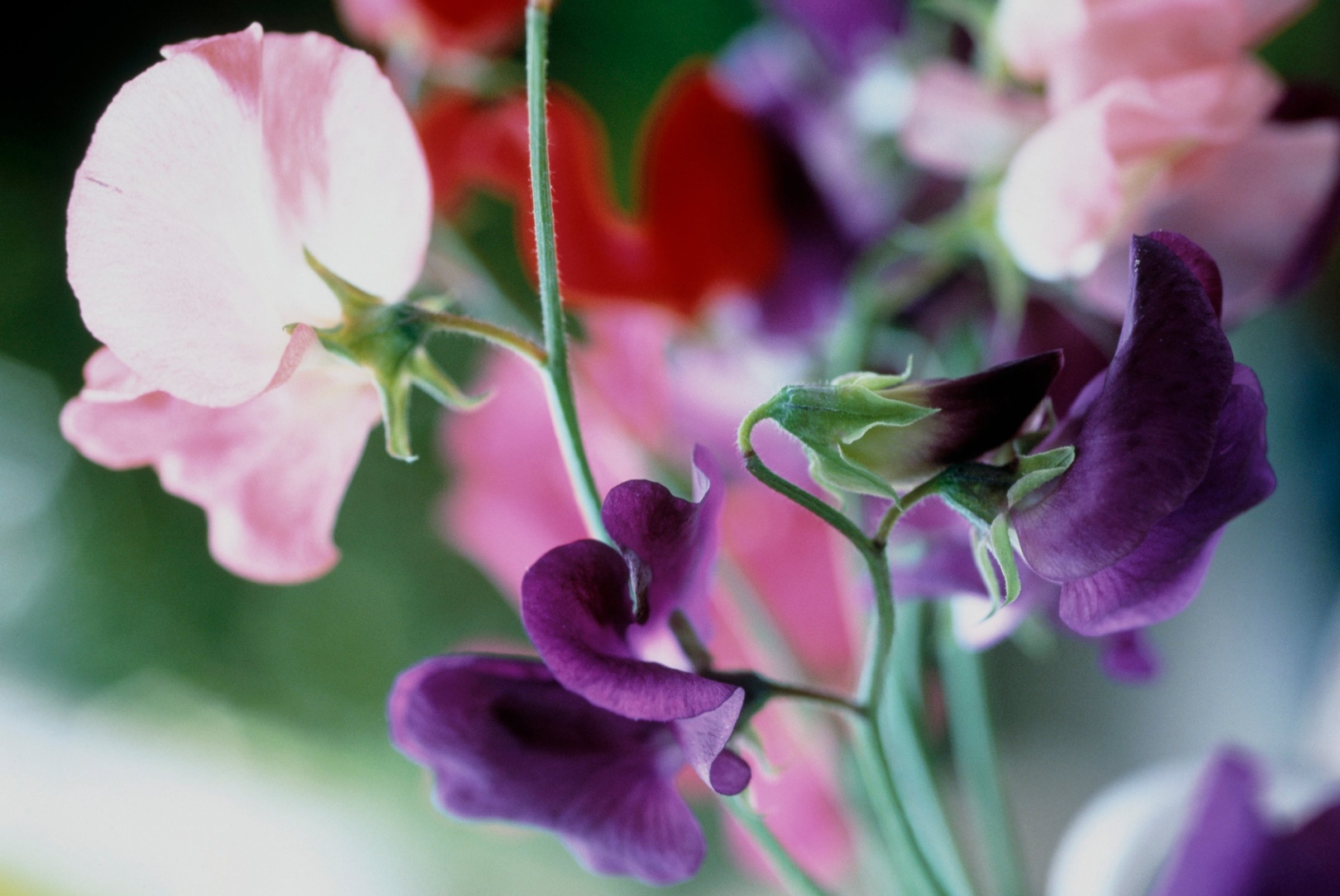
Ideeone / Getty Images
Sweet Peas (Lathyrus odoratus)
An old cottage garden favorite, rambling sweet peas in all shades of pastels take off when planted alongside a fence line or allowed to overtake a trellis. Plant in rich, amended soil and water deeply and regularly to encourage vigorous roots. To prolong flowering, pick stems or deadhead often.
2 of 10 Flowerphotos / Getty Images
Geum (Geum coccineum)
Dainty 1″ orange flowers form atop wispy stems in this prolific perennial. Geums are happiest in partial shade with well-drained soil, and will remain evergreen in most climates. ‘Totally Tangerine’ is a favorite for the designer’s garden as its petals resist shattering when cut.
Mark Turner / Getty Images
Rudbeckia triloba
Towering upright stems form a sea of wildflowers, in sharp contrast to this plant’s traditional, tame cousin the Black-Eyed Susan. Planted in full sun along a border, it will self-support and grow up to 3′ tall. If planted in shade, support netting may be necessary as stems will elongate and weaken.
Danita Delimont / Getty Images
Columbine (Aquilegia vulgaris)
Slender, elegant 2-4′ stems hold small nodding flower heads with intricate patterns. A short-lived perennial, columbine grows best in well-drained soil with afternoon shade. Cut back spent stems to encourage a second flush. We love the ‘Barlow’ series for its unique range of colors.
Stephen Hayward / Getty Images
Panda Anemones (Anemone coronaria)
Grown from small tubers, anemones are a much-loved flower of early spring. The dramatic black eye surrounded by paper-thin white petals is unparalleled for its dramatic effect. Anemones begin to peter out once temperatures climb towards 70, making them prime candidates for fall planting.
itsabreeze photography / Getty Images
Foxglove (Digitalis purpurea)
Most foxglove species are biennials, meaning that they’ll flower and set seed in the second year. An exception is the first-year-flowering ‘Dalmation’ series. Bell-shaped speckled flowers form along one side of tall 4′ spikes. They can tolerate full sun, but will thrive under afternoon shade in hotter climates.
Lisa Sieczka / Getty Images
Ranunculus (Ranunculus asiaticus)
Layers of soft petals make for a huge, lush flower head that resembles garden roses. Grown from small tubers or “corms,” ranunculus are known for their soft pastels from the ‘La Belle’ series. They put on their show in mid-spring and feature longer stems if planted in the fall.
Laszlo Szirtesi / Getty Images
Annual Phlox (Phlox drummondii)
While the phlox family is largely perennial, we love the showy annual varieties for their vigor. Choose from Phlox drummondii ‘Cherry Caramel’ or ‘Sugar Stars’ for gorgeous coloration and pillowy flowers atop 18” stems. Plant close together for tallest stems, and choose an area with rich soil and full sun.
Westend61 / Getty Images
Fritillaria (Fritillaria meleagris)
Common in English gardens, word of fritillaria is just making its way over the pond to a new generation of American gardeners. F. meleagris is much loved for its tiny checkered flower heads on short dainty stems. They’ll perform best in sheltered, woodland gardens in dappled shade.
MarkBridger / Getty Images
Ornamental Allium (Allium)
There are about 500 species in the allium family, including the kitchen staples of onions and garlic. Our favorite ornamental varieties include Allium sphaerocephalon, Allium cristophii, and Allium schubertii. They prefer rich, sandy soil, and will appreciate division after a few years.
This article originally appeared on Sunset.com
More Must-Reads From TIME
- Dua Lipa Manifested All of This
- Exclusive: Google Workers Revolt Over $1.2 Billion Contract With Israel
- Stop Looking for Your Forever Home
- The Sympathizer Counters 50 Years of Hollywood Vietnam War Narratives
- The Bliss of Seeing the Eclipse From Cleveland
- Hormonal Birth Control Doesn’t Deserve Its Bad Reputation
- The Best TV Shows to Watch on Peacock
- Want Weekly Recs on What to Watch, Read, and More? Sign Up for Worth Your Time
Contact us at letters@time.com